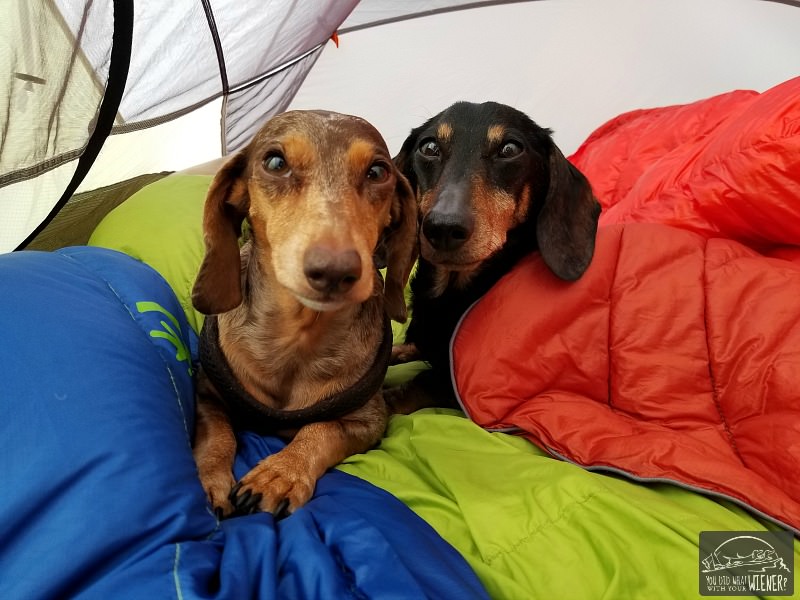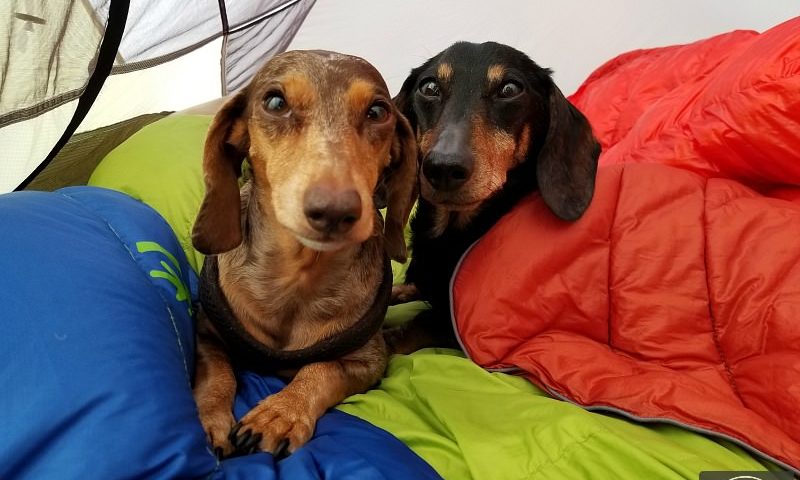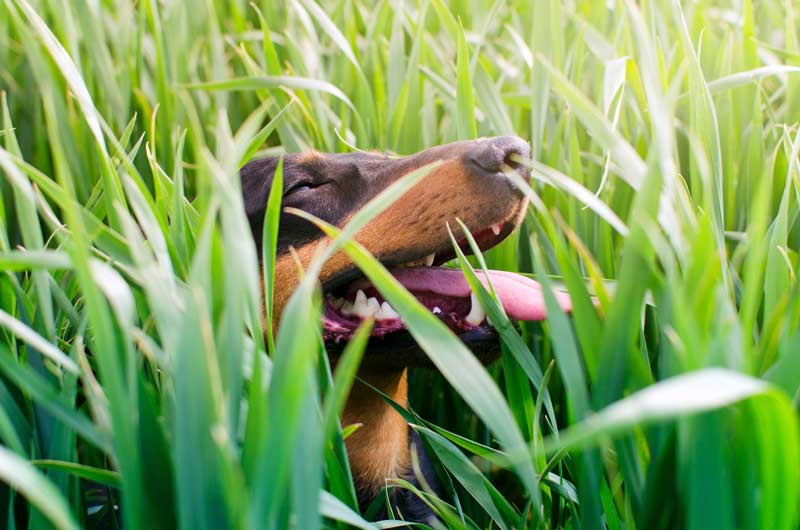To learn about this topic we invited Jessica, the person behind the Instagram handle and dog blog called @youdidwhatwithyourwiener to join us for a podcast interview. A local gem of knowledge, her blog is packed with trip reports, tips, and inspiration for hiking with dogs in the Pacific Northwest.
Before she became a full time blogger, Jessica worked as an environmental scientist and water quality expert for nearly 20 years at the Olympic National Park. Here we outline the key points of our interview with her, which you can listen to its entirety below.
1. What is the general policy for pet waste while in the outdoors
Anywhere, even in your backyard, the general policy is to always bag it, pack it out, and dispose of it. But you already knew that, so now let’s get into the nitty gritty!
2. For dog poop, let’s say that you pick it up. Is it better to use biodegradable bags and what conditions must be accessible for the bag (and its contents) to break down?
“Biodegradable” is a bit of a misnomer. A decade ago, any kind of bag that wasn’t made out of plastic could be labeled as biodegradable.
Now, the FTC defines a biodegradable product as one that will break down within 1 year under “normal” disposal environments. However, modern landfills are designed to seal and mummify the contents, meaning that it will not be exposed to sufficient conditions to degrade. If any of the contents do manage to break down, the leachate will seep into the surroundings and cause the release of methane (a greenhouse) gas. This of course is one of the largest environmental issues of our time.
So what should we do instead? Use compostable bags! If properly exposed to air and sunlight, they will attract microbes that will produce heat as they break down the products. Although that seems like specific conditions, we still encourage the use of compostable bags for pet waste since it means that you are not contributing to the perpetuation of petrol based products.
To avoid sending your pet waste to landfills altogether, find out if your local municipal waste management facility can process bagged dog waste.
Learn how to compost dog waste at home here.
3. Leave no trace principles state that human waste must be buried in the backcountry in a cat hole at least 6 inches deep, 200+ ft away from the trail and water sources, and used toilet paper must be packed out. What is the reasoning behind each of these?
6 inches deep: This depth (4 inches in the desert) puts the waste in the organic zone, exposing it to bacteria that can break it down. The leachate that comes out from it breaking down will eventually be neutralized by the soil. Do not bury waste in areas that are excessively rocky, barren, or will not receive moisture, since the organic layer is very thin.
200+ ft away from the trail and water sources: Especially if waste is left on the surface, rainwater, wildlife, or other disturbance methods are able to spread pathogens into nearby areas and water sources. It is also smelly and unsightly when left close to trafficked areas.
Toilet paper: carry it out with the rest of your trash or bury it with solid waste. Never leave it behind on the surface.
Best practice: For both human and pet waste, it is always best to pack everything out. It might be easy to assume that one person or their pet’s waste will not impact the environment or that wildlife leave waste behind all the time in the woods. But remember that established trails and riverbeds receive much more activity than deep forests or other remote regions. Over time, this creates a waste corridor that is more likely to contaminate nearby water sources, which can transfer disease back to pets and humans. Source
4. What is the proper way of disposing of pet waste in the backcountry for overnight or multi-day trips?
You can carry both human and pet waste in airtight containers. If appropriate, your dog can carry their own waste in a doggie pack. Some good options include Wag Bags (that include a gelling substance to control odor, Doo Doo Tubes (or even simply double bagging waste in an airtight Ziplock bag. Carry it with you until you reach an appropriate waste disposal location.
5. What kind of hazards can the environment and ecosystem face if it is not disposed of properly? What about in urban or suburban (city and park) environments?
The greatest concern is spreading disease through harmful bacteria and parasites, which can have a ripple effect on the environment.
In urbanized areas especially, stormwater will easily flow into the sewer due to concrete and paved waterways. This surface runoff – which can contain sediment, pathogens, fertilizers, petrol products and any substance or material that can be carried by water – bypasses the natural filtration of soil. However, contrary to popular belief, this runoff water does not have to go to a treatment plant and flows directly back into natural waterways.
This can lead to disease outbreaks in pets and people who come in contact with contaminated water at beaches and lakes. Furthermore, the excess nutrients (particularly phosphorus) can cause massive algae blooms which can lead to shaded water surfaces, reduction in light penetration and photosynthetic capabilities in aquatic plants, poisoning of fish and other aquatic species, and the release of toxins into the environment. All these effects are further exacerbated by the increasing temperatures of global climate change.
6. What kind of pathogens can be found in natural water sources if a pet drinks from it and which can be transferred into a human household?
Giardia, e. Coli, fecal coliform, roundworm are some major ones. Dog poop the size of a pea can contain 23 million fecal coliform bacteria alone. While it is always advisable to bring water for both yourself and your pet, dogs have a different gut microbiota than humans, making them more equipped to handle the risks of drinking out of an open water source. However, that does not mean that they cannot become carriers for certain diseases even without showing symptoms. Zoonotic diseases are ones that can be passed from an animal to a human.
7. Which kind of vaccinations can be taken to help prevent waterborne pathogens in pets?
The Leptosporosis vaccine is only 75% effective for the three most common species of 20 in the Leptospira genus. A giardia vaccination is also available, but it is not yet reliable and thus, not widely known.
8. Do different diets affect the microbiota of pet waste?
We can only speak in generalizations on this topic, but an animal that eats a species appropriate plant based diet will have less bacteria in their waste than an animal that eats a species appropriate meat based diet. Furthermore, the more natural the diet is, the easier it is for the nutrients to be properly metabolized within organism, meaning that there is less final waste produced. The breakdown process once it leaves the body is still the same regardless of diet.
9. Why is it more acceptable for horse poop to be left on the trail but not dog poop?
While it is unsightly, compared to dogs, horse manure is less likely to spread disease to other animals and humans due to their primarily plant based diet. Furthermore, the plant matter breaks down faster than the more complex waste of carnivores or omnivores.
There are also some cultural aspects to respect. The creation and maintenance of the many trails we enjoy would not be possible without the help of pack animals. They are part of teams that go out at the beginning of the season to clear trails for recreation. Weighing the health risk versus the personal risk of a human to dismount and tend to the waste on a narrow trail goes in favor of leaving the horse manure behind.

Here are the intrepid weenies behind @youdidwhatwithyourwiener
And there you have it! We hope you learned something new and are able to help inform others on best practices while enjoying our public lands.




Leave a Comment
One Comment:
I just saw a video where someone let their dog poop in a large creek with flowing water. A lot of people found it hilarious, I think it’s disgusting and extremely negligent. I know that You’re not supposed to flush dog or cat poop down the toilet because of all of the bad bacteria that can go into our water system. Can you go into more detail why it’s a terrible idea to let your dog poop in moving fresh water please? Thank you so much.